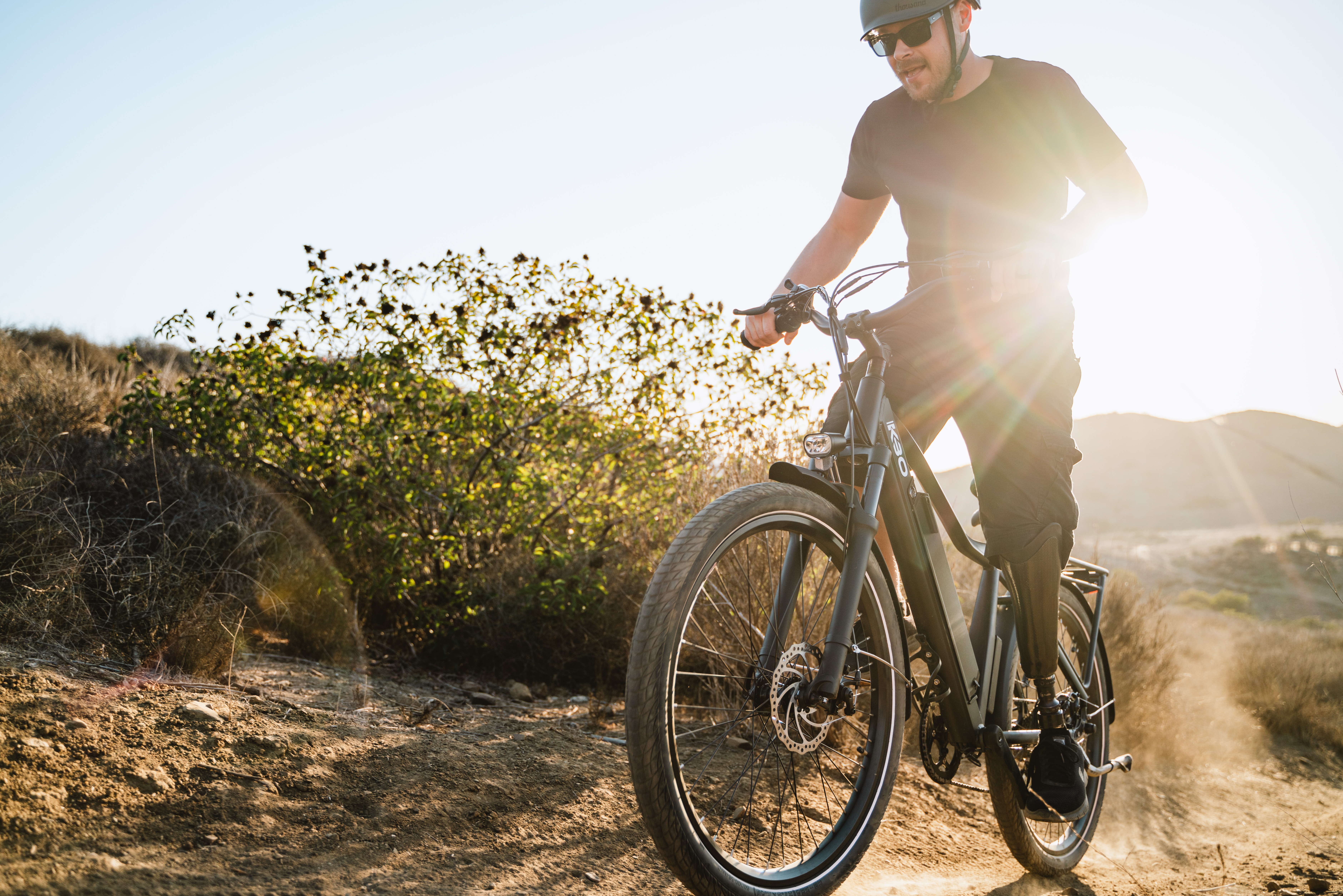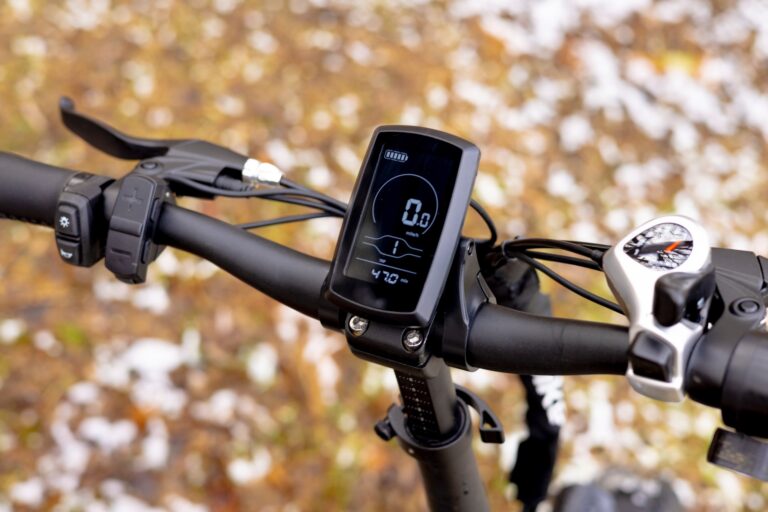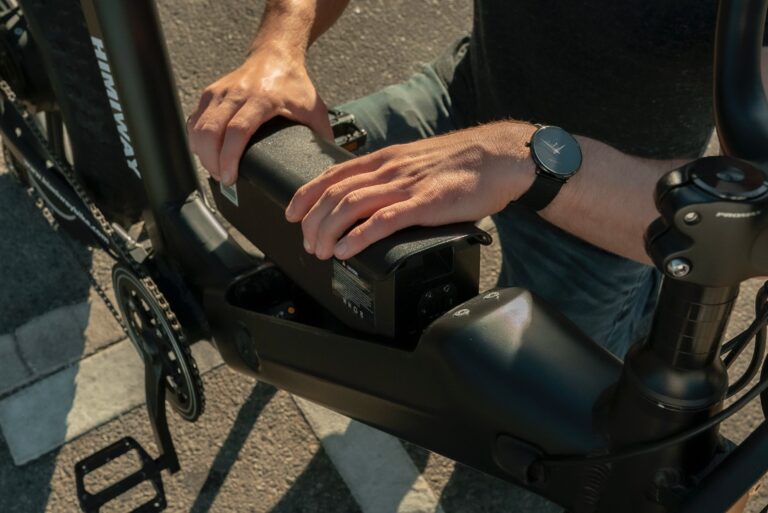HOW GOOD ELECTRIC BIKES PERFORM ON HILLS.


Ever find yourself going on a long ride struggling to find that last bit of energy to make it up that last hill? Whether you are just a casual rider or a hardcore cyclist, we all can relate to how physically demanding hills can be.
Well e-bikes have made it possible for longer commutes while giving riders that power assist to make it up those steep to moderate hills with little to no effort felt, whether you are a casual rider or hardcore mountain bike enthusiast, you can count on e-bikes for providing a commute without the sweat. While e-bikes add more to the fun factor to casual bike riding, while also providing means of getting to explore the outdoors for longer periods of time with the help of PEDAL ASSIST.
An electric bike’s ability to climb up steep hills is determined by many factors, such as overall gross weight of rider, bike, and accessories being pulled, how much manual physical pedaling the rider is contributing along with power assist, also how powerful the electric motor and battery is on the type of electric bike you are riding.
Torque equals power, power equals how easy it is to climb those hills!
When choosing an ebike, one important factor to look at is the torque rating of the ebike motor. Torque is measured in Newton Meters (Nm), or the rotational force that the motor can exert. Torque is important when we are talking about pulling all the additional weight an ebike has to pull when considering going up those steep hills. You can tell when a motor has little torque when climbing hills because you will hear and feel how hard the motor will have to work when pushing upward steep inclines.
You can find Torque ratings ranging from 35, 55, 85, and 90Nm. For the average rider who performs their commute at about 50-50 pedal to power assist, a bike rating at 35 or 55Nm will suffice, but if you’re thinking that you’ll be using your bike for mostly hilly terrain, or live in an area will lots of hills, then we recommend looking into a motor rating of 85 to 90Nm which will provide more than adequate power for climbing hills when needed.
Most common motor ratings range from the low end of 250-350W all the way to the high end motors ranging from 500W to 750W. Most typical e-bike batteries are rated from 36V, 48V, and 52 volts. With E Bike batteries becoming more powerful with higher amp hour ratings, e-bikes subsequently are able to handle longer ride distances as well as help tackle those Hills, allowing for a more enjoyable bike experience.
Accessory loading
It is easy and tempting to want to load additional accessories on your ebike such as front or rear cargo racks, water bottle holders, cargo trailers for the kids or pets, and a plethora of handlebar accessories. Remember, more weight equals more power it requires to pull the bike, either from more physical pedaling or power from the motor or a combination of both. Most reputable e-bike companies with higher quality motors and batteries have the torque needed to handle that demanding load.
You also have to consider that with the added weight, equals a decrease in mileage your ebike will go on a single charge as compared to mostly flat ground riding. So depending on how long your commute is, try to use a healthy mix of pedal assist and manual pedaling to help stretch that mileage. A recommended tip would be to set the ebike on a lower power assist setting during flat ground riding and up the juice to 100 percent battery power when you need to tackle those hills in your area.
Type of Ebikes to consider.
All ebikes will provide some assist for taking on those hills, but there a 3 types of motor configurations to consider when choosing your ebike for hill climbing.
Mid Drive
Mid drives offer the best performance when it comes to hill climbing, they are some of the higher quality motors to be put into ebikes and provide more control and more of a smooth pedaling experience, but they tend to be more on the pricey side and installed on higher end ebikes.
Rear Hub Drive
Rear hub motors are the most common type due to their simplicity and their cost efficiency but are becoming more of a thing of past technology. You can find these on most common budget friendly to middle class ebikes, but still provide performance and power overall for commuting up the average hill.
Front Hub Drive
The front hub configuration is less common and are usually found on economy ebikes. It is said that front hub drives give better overall weight distribution and less likely to pop a wheely under full throttle while going up a hill, but contrary to belief, front hub ebikes may suffer more of a traction loss as compared to mid-drive or rear hubs, they are usually offered as weaker motor setups, so we do not recommend this setup for hills.
Ebikes have gained sort of a bad rap in the past for “cheating” yourself out of a good workout as compared to traditional cycling, but today, ebikes have come a long way and continue to gain popularity among any type of riders out there. The versatility that ebikes can provide are beneficial. Just think, if you just want to take your ebike on a trip to enjoy the outdoors without worrying too much about the fatigue and more on cruising and taking in the sights, but you also can turn off power assist and get a full-blown workout, and I really do mean a WORKOUT, then an ebike is right for you.


